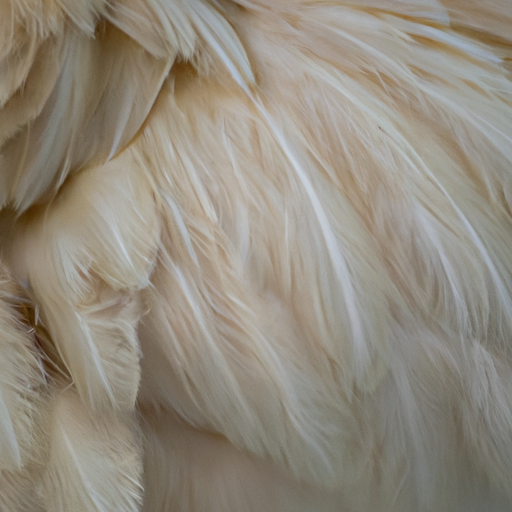
You’re about to discover the subtle yet telltale signs of broodiness in a young pullet. It’s essential to understand these signals as an owner or enthusiast of these lively birds to ensure their proper care and overall well-being. From changes in behavior to physical manifestations, you’ll gain valuable insights into the fascinating world of a broody young pullet. So, sit back, relax, and prepare to explore the unmistakable signs that hint at a pullet’s broodiness.
Understanding Broodiness in Young Pullets
Broodiness is a natural instinct for hens, especially as they reach maturity and prepare for reproduction. However, it is important to understand the signs of broodiness in young pullets to ensure their well-being and optimal health. Broodiness refers to a hen’s desire to hatch and raise a clutch of eggs, often resulting in her becoming protective and possessive of a nest. By recognizing the physical and behavioral signs of broodiness, you can provide appropriate care and support for your young pullet.
Physical Signs of Broodiness
There are several physical signs that may indicate broodiness in a young pullet. Keep a keen eye out for these signs to assess whether your pullet is going through a broody phase. One common physical sign is an increase in body temperature. Broody hens may feel noticeably warm when you touch them, as they generate extra heat to incubate the eggs. Additionally, the comb and wattles of a broody pullet may appear dark red or swollen due to increased blood flow to the reproductive organs.
Behavioral Signs of Broodiness
In addition to physical changes, broodiness in young pullets can also be identified through their behavior. Pay attention to any shifts in their usual habits and interactions with other hens. One prominent behavioral sign is the pullet’s inclination to spend an extended period of time sitting in a specific spot, accompanied by a strong desire to remain in the nest box. This behavior is driven by an instinctive need to incubate the eggs and protect them from potential harm.
Nesting Behavior
One of the key indicators of broodiness in a young pullet is a shift in their nesting behavior. Instead of simply laying eggs and moving on, broody pullets become fixated on the nest. They may rearrange and mold the bedding to create a cozy and secure environment for themselves and the eggs they believe they are incubating. This nesting behavior often involves excessive scratching, fluffing, and arranging of the nest materials to create the perfect environment for hatching chicks.
Increased Sitting
Broody pullets tend to spend a significant amount of time sitting on the nest, exhibiting a behavior known as “broody sitting.” This extended sitting session is a clear indication of their commitment to incubation. They will diligently remain in the nest, rarely moving except for brief periods of stretching and grooming. During this time, they will instinctively rotate the eggs to ensure proper heat distribution. It is important to note that their extended sitting may impact their overall health and egg-laying capabilities if not managed appropriately.
Aggression toward Other Hens
Another sign of broodiness in young pullets is the display of aggression towards other hens. A broody pullet may become territorial and possessive of her nest, unwilling to tolerate any disturbances or intrusions. She may peck at or chase away other hens who come close to her chosen nesting spot, expressing her protective instincts. It is essential to monitor this behavior closely, as excessive aggression can lead to injuries or heightened stress levels among the flock.
Feathering Droop
Broody pullets often exhibit a distinct change in their posture and appearance. You may notice a drooping or fluffed-up appearance of their feathers, particularly around the abdomen area. This feathering droop is a visible indication that the pullet is preparing her body for incubation. By fluffing up her feathers, she creates insulation to maintain a consistent and warm environment for the eggs. This physical change is a strong sign that your pullet is experiencing broodiness.
Loss of Appetite
A loss of appetite is a common occurrence in broody pullets. Due to their intense focus on incubation, their desire to eat may decrease significantly. It is important to offer them a balanced diet during this period, taking into account their reduced intake. Provide easily accessible food and make sure the pullet has adequate access to water to ensure her health and hydration levels are maintained.
Vocalization
As a young pullet goes through the broody phase, you may notice changes in her vocalization patterns. Broody hens tend to be more vocal, emitting low and deep clucking sounds to communicate with their unhatched chicks and assert their presence. These vocalizations are often accompanied by protective behaviors, such as puffing out feathers and spreading wings in a display of dominance. By closely observing these vocalizations, you can gain valuable insights into your pullet’s broody state.
Protective Behavior
Perhaps one of the most noticeable signs of broodiness in a young pullet is her protective behavior. When a pullet is broody, she becomes fiercely guarding of her nest and any eggs she believes are actively being incubated. She may fluff up her feathers, emit warning sounds, and even peck or chase away any perceived threats or disturbances. It is crucial to respect her instincts and provide a safe and secure environment for her to fulfill her natural desire to raise a clutch of chicks.
In conclusion, broodiness in young pullets is a normal and natural phase in their reproductive cycle. By recognizing the signs of broodiness, such as physical and behavioral changes, nesting behavior, increased sitting, aggression toward other hens, feathering droop, loss of appetite, vocalization, and protective behavior, you can provide the necessary care and support for your pullet during this unique stage. Understanding broodiness allows you to create an environment that promotes her health, happiness, and well-being, ensuring a successful and fulfilling broody experience for your young pullet.





